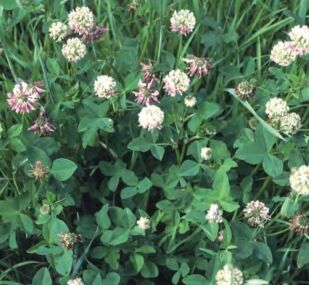Clover can cause toxicity problems in horses

There are three clovers you should be able to identify that can cause toxicity problems in horses: red, white and alsike.
Red and white clover are not toxic on their own, but a fungus that causes black patch, a common disease, is toxic. This fungus produces a toxin that causes excessive drooling or slobbering in horses. While this might be unsettling to witness as an owner, the condition is usually not life threatening but can cause dehydration.
This toxin can be found in both pastures and dried hay if the clover was infected. This disease likes cool, wet weather, so if these conditions are present, keep an especially close eye out for symptoms like bronze to black spots on the stems and leaves.
Alsike clover is another clover that can be found in pastures. With an appearance similar to red or white clover, you can identify this clover by its multicolored flowers, which are dark pink at the base and light pink towards the tip. Additionally, leaves will be serrated with no distinct white “V’ shape commonly found on red and white clover leaves. Once again, a fungus infecting the clover is what is responsible for the toxic symptoms seen in horses.
Two serious conditions can be seen in horses from this toxicity, photosensitization, and big liver syndrome. Photosensitization causes the skin to react to the sun rays resulting in what looks like a bad sunburn; however, in some cases the skin dyes and may slough off entirely. Progressive destruction of the liver known as big liver syndrome can occur after long-term exposure to the infected clover and results in liver failure.
So, what can you do to protect your equine? First, properly identify clover that may be present to get an idea of the risk. Herbicides may be used to thin or remove clover from your pastures if desired. During periods of wet/humid weather, fence off large patches of clover, or keep patches of clover mowed short to prevent the favorable conditions for the fungus.



